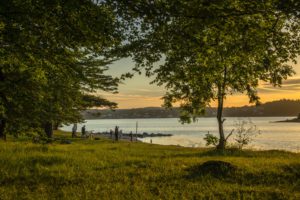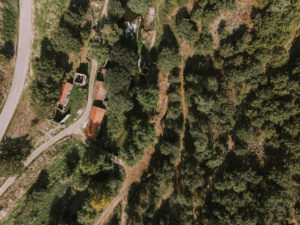New members, welcome! Who joined us in the first half of 2021?
Ⓒ Municipality of Lousada
Over the first half year of 2021, 6 members from 4 countries joined the EUROPARC Network and we would like to officially introduce them with a warm WELCOME!
Tere tulemast, Benvenuti, Velkommen, Bem-vindos!
We are excited to welcome and briefly present our new members to the rest of the network. They are coming from:
ESTONIA
Aivar Ruukel (individual member)
Mr. Aivar Ruukel has been guiding visitors in the Soomaa National Park since 1993, promoting values of the park and sense of the place as a local private tourism service provider. Since 1996, he has also been involved in organizing workshops on building local traditional dugout boats (haabjas). Currently, Mr. Ruukel works on applying this cultural value of Soomaa NP into the heritage list of UNESCO.
NORWAY
Raet National Park
The Raet National Park is mainly a marine park that also includes important geological formations and cultural landscapes such as heath, meadows and forests. It is the local recreational area for many thousands of local habitants and also many tourists. Lately, the Park has seen an increasing amount of organized activities such as guided tours and water-sports. For more information about the Park and its various activities, check their website!

Grimstad, Raet National Park ©Tore Moi
ITALY
Regional Natural Park Ligurian Alps
Established in 2007, the Regional Natural Park of the Ligurian Alps covers about 6000 hectares in the hinterland of western Liguria, in the Province of Imperia on the border with France and Piedmont. The Protected Area includes parts of 7 municipalities: Cosio d’Arroscia, Mendatica, Montegrosso Pian Latte, Rezzo, Triora, Pigna and Rocchetta Nervina.
Among the Park’s most interesting sites are the Saccarello mountain (2,200 m), the highest peak in Liguria, the Riserva-Foresta Demaniale di Testa d’Alpe, the woodland of Rezzo, and the Toraggio-Pietravecchia mountain range. The local environment is home to almost 3,000 plant species, including some very rare ones even at the world level, and very rich fauna. Historical and artistic testimonies can be seen and visited in the historic villages and on the paths. Centuries ago, important local artistic families frescoed and decorated churches, chapels and sanctuaries, carved portals and erected stone monuments.
CURSA (University Consortium for Socioeconomic Research and the Environment)
CURSA engages in many activities, including study, research, education and training in the area of environment, energy and pollution mitigation tools. Their activities also include various programs, projects and innovative actions in the fields of environmental sciences, energy and environmental policies, socio-economic disciplines, the assessment of sustainability and efficiency of governance actions of local authorities.
The Consortium also carries out support actions to public decision makers and stakeholders in orienting and evaluating policies and tools for the defense and conservation of biodiversity. It has promoted and implemented numerous studies on national parks, marine protected areas and UNESCO MAB areas and has promoted project actions in support of agricultural entrepreneurs, consumers, and public decision-makers.
PORTUGAL
Municipality of Lousada
Promoting environmental protection measures through environmental awareness and the valuation of green spaces is one of main goals of the Municipality of Lousada. Their actions illustrate the powerful role environmental education plays in promoting environmental practices, supporting the creation of conservation areas and environmental job opportunities, as well as reconnecting local citizens with their rural landscape.

Ⓒ Municipality of Lousada
Since 2015, the Municipality of Lousada has implemented an innovative sustainability agenda, integrating all types of stakeholders in active citizenship like private companies, parishes, schools and NGOs. With a number of local projects, the educative system shifted towards promoting environmental awareness and action. The territory protects priority areas for nature conservation, controls invasive species and restores degraded areas. So far, over 40 hectares of degraded land has been converted to nature conservation areas and over 65.000 native trees were planted.
Association of Municipalities Parque das Serras do Porto
The Regional Protected Landscape Park das Serras do Porto assumes a strategic position in the Porto Metropolitan Area, as a refuge for biodiversity and a provider of important ecosystem services. It covers close to 6000 hectares, in a sequence of 6 hills, crossed by the valleys of the rivers Ferreira and Sousa. It includes the Special Area of Conservation ‘Valongo’, which is part of the Natura 2000.
The area is famous for its patrimonial values and geological history – including for example the archaeological remains of the largest underground gold mining complex of the Roman Empire. In fauna, the Golden-striped Salamander is particularly remarkable, as it finds in the ancient Roman mines excellent places for its reproduction and metamorphosis. At the same time, the territory is home to rare populations of ferns, typical forests of the Atlantic region and extensive heaths. Agricultural practice is observed around the villages and due to the proximity to large urban centres, it is an area widely used for sport and recreation. It can be characterised as a periurban park, combining conservation with sustainable use and significant civic engagement.